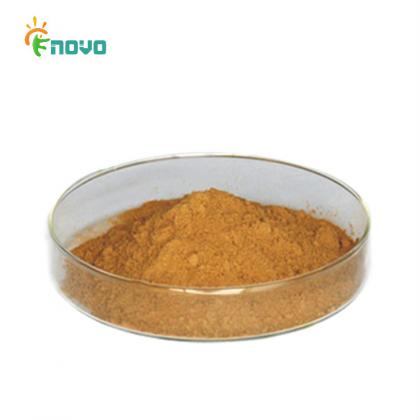30th Week Nutrition Industry News
Aug 05, 2022
Why phycocyanin is so popular
Studies have shown that blue-toned foods can suppress appetite and give people a sense of full pigmentation. But drinks with gradient colors or lighter shades of blue may bring back the desire to taste.
Spirulina, the raw material of cyanobacterial protein, is a health food ingredient
Status of foreign regulations:
United States
(1) Aqueous extracts of cyanobacteria (Spirulina maxima and Spirulina obtusifolia) rich in phycocyanin are GRAS certified (GRN No. 424)[1]
Use: All food ingredients except infant formula and foods under the jurisdiction of the USDA, up to 250 mg/serving
(2) Spirulina extract with phycocyanin as the main coloring component is exempt from certification when used as color additives[2
Scope of use: coloring of confectionery (including candy and chewing gum), frosting, ice cream and frozen desserts, dessert coatings and toppings, beverage mixtures and powders, yogurt, custard sauces, puddings, white cheese, gelatin, bread crumbs, ready-to-eat - edible cereals (excluding puffed cereals), coating formulations applied to dietary supplement tablets and capsules at levels in accordance with Good Manufacturing Practices (GMP), and seasonally to hard-boiled eggshells, except that it cannot be used to color food as characterized by section 401 of the Federal Food, Drug, and Cosmetic Act unless the added color is authorized for use by these standards
Japan
Spirulina pigment (a substance based on phycocyanin extracted from Spirulina) is an existing additive and can be used as a coloring agent [3]
Korea Ministry of Food and Drug Safety
Algae blue pigment (obtained from Spirulina obtusifolia, the main pigment is algocyanin) is a food additive [4]
Singapore Food Authority
Spirulina extract or cyanobacterial cyanidin extracted from Spirulina is a food additive permitted by Singapore food regulations[5]
Requirements: lead content ≤ 2 mg/kg; arsenic content ≤ 2 mg/kg; mercury content ≤ 1 mg/kg; negative for microcystins[6]
What are the effects of phycocyanin
(1) Antioxidant. Many literatures have shown that phycocyanin has antioxidant activity in scavenging hydroxyl radicals and hydroperoxyl radicals. In addition to this, it has also been reported to have some degree of antioxidant modulating effects. By establishing a mouse model of oxidative damage induced by adriamycin (*Note), some researchers found that the treatment of model mice with phycocyanin showed a significant reduction in the level of reactive oxygen species in the treated group compared to the control group.
(2) Adjuvant protective function against radiation hazard. Researchers studied the protective effect of algal cyanobacteria on radiation-induced oxidative damage by establishing a mouse model of X-ray radiation damage, and the experimental results showed that algal cyanobacteria could improve the antioxidant capacity of mice, reduce the oxidative damage caused by radiation, and have a better protective effect on radiation damage in mice.
(3) Enhance immunity. In vivo mouse models have shown that algin can promote the differentiation and growth of granulosa progenitor cells in mice, thus improving the immune function of the mouse organism. In addition, algal cyanobacteria have been reported to reduce allergic reactions in mice through immunomodulatory activity.
(4) Adjuvant protective function against chemical liver injury. By establishing a model of alcoholic liver injury in rats, researchers found that the administration of phycocyanin complexes could effectively inhibit alcohol damage to hepatocytes.
(5) Helps retain skin moisture and reduce dryness. In a randomized, double-blind, placebo-controlled trial investigating the effects of phycocyanin from Spirulina on skin function in healthy subjects, 96 subjects were randomly divided into phycocyanin (containing C-phycocyanin and allophycocyanin) and placebo groups, and it was found that in the test diet group containing phycocyanin, the amount of water evaporated from the subjects' skin (an indicator of skin hydration) was significantly The results showed a significant reduction in water evaporation (skin moisturizing power indicator) after 8 weeks in the test group containing algin.
What are the applications of phycocyanin?
(1) Use as a natural color. Algocyanin was approved by the Food and Drug Administration in 2013 as a food additive to be added to food matrices and is currently used as a natural coloring agent in foods such as beverages, dairy products and confectionery. Besides, it can also be applied in industries such as cosmetics and fuels.
(2) Used as fluorescent substance. Phycocyanin has a broad excitation spectrum and high quantum yield fluorescence, with a single visible absorption maximum between 615 and 620 nm and maximum fluorescence emission near 640 nm, and no toxic effect on immunological analysis, so it can be made into fluorescent reagents, fluorescent probes, fluorescent tracer substances, etc., used in clinical medical diagnosis, immunochemistry and bioengineering and other research fields.
(3) Used as functional food ingredients. Functional research on algal cyanobacteria has been ongoing, and some products with functional claims made from algal cyanobacteria have long been available in the market.

 English
English















